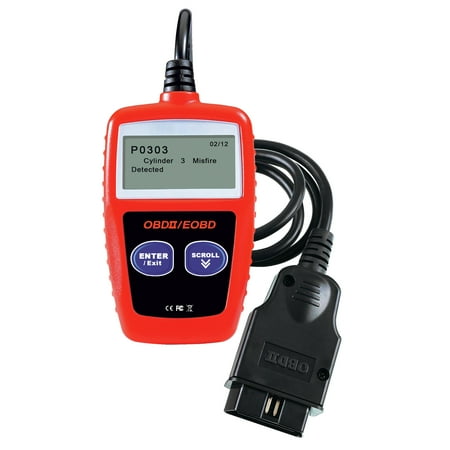Hyper Tough HT309 OBD2 Scan Diagnostic Tool Code Reader, Red
Make sure all of your automotive engines are functioning properly with Hyper Tough’s OBD-II/E0BD Code Reader. This invaluable tool from Hyper Tough is all you’ll need to check engine faults in all 1996 and newr OBDII compliant vehicles, and will allow you to look where the pros look when fixing your vehicle. It helps to easily determine the DTC (Diagnostic Trouble Code) fro the “Check Engine Light” indicator, and turns Check Engine Light off, clears codes and resets monitors. It easily retrieves vehicle information, and displays moitor and IM readiness status. Take the guesswork out of what’s malfunctioning in your vehicle, and pick up this Hyper Tough OBD-II/E0BD Code Reader today!









Hyper Tough HT309 OBDII CAN Diagnostic Code Reader, Red Features:Works with 1996 and newer vehicles (OBD II/CAN) domestic, Asian and EuropeanView live freeze frame dataUtilizes standard 16-pin OBD-II connector meaning no additional connectors or cables are necessaryLarge easy-to-read backlit LCD screenRetrieves generic (P0, U0), manufacturer specific (P1, P2, P3, and U1) codes and pending codesEasily determines the cause of the Check Engine Light (MIL)Turns off Check Engine Light (MIL), clears codes and resets monitorsDisplays DTC definitions on screenDisplay monitor and inspection maintenance (I/M) readiness statusRetrieve vehicle information (VIN, CIN, and CVN)Multilingual menu and DTC definitions including English, Spanish and FrenchLimited 1-year warrantyPackage contents: tool and user manual





Reviews
There are no reviews yet.